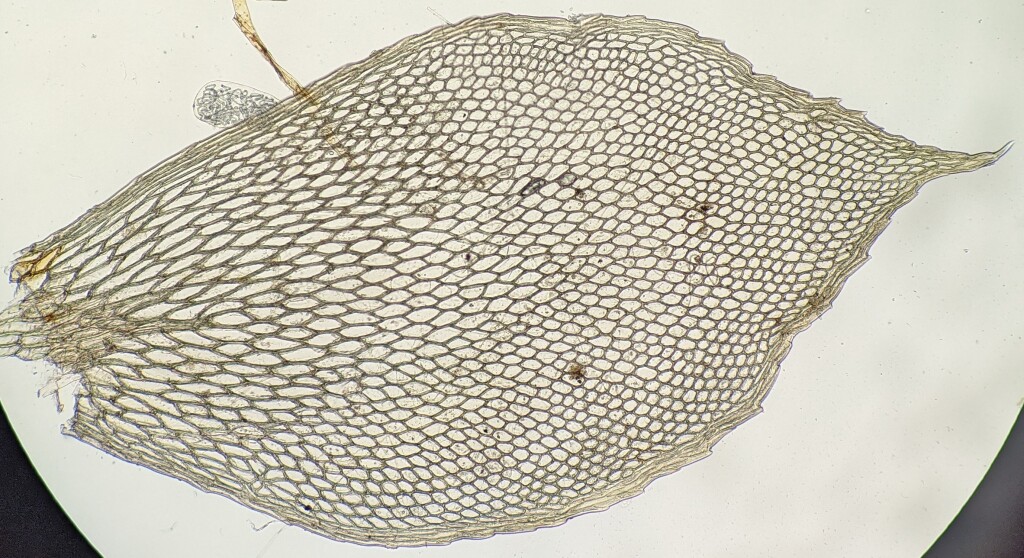Calyptrochaeta flexicollis
(Mitt.) VittDioicous. Asexual propagules absent. Loose turves on soil, rocks, logs or tree trunks, yellowish to dark green. Stems 12–30 mm long, simple or branched, red-brown, with abundant reddish-brown rhizoids at stem base and in leaf axils, central strand absent. Leaves oblong to broadly oblong-lanceolate, 1.6–2.6 mm long, 1–1.5 mm wide, those in dorsal and lateral ranks symmetric, those in lateral ranks asymmetric, plane, slightly undulate when dry; apex rounded or obtuse, with 150–200 μm long apiculum; costa weak, very short, forked; margins prominently irregularly dentate near apex, plane, with 3–5 rows of more elongate cells forming a border throughout; laminal cells in apical half away from margin oblong-hexagonal, 25–70 μm long, 12–35 μm wide, smooth; basal laminal cells away from margin rhomboid- or oblong-hexagonal, 25–105 μm long, 10–38 μm wide, smooth; marginal cells linear, 42–125 μm long, 5–10 μm wide, smooth. Setae 3–7 mm long, yellow-brown, densely covered with hyaline, non-papillose spines. Capsule ovoid, horizontal or inclined, straight, 1–1.5 mm long. Calyptra densely hairy throughout, sometimes smooth near apex, fimbriate at base. Operculum 0.4–0.6 mm long.
OtP, VAlp. Chile and New Zealand. Also QLD and Tas. Known from two records in Victoria (Upper Calder River in the Otways and near Mount Baw Baw).
 Spinning
SpinningStreimann, H. (2000). Taxonomic studies on Australian Hookeriaceae (Musci). 3. The genera Calyptrochaeta, Daltonia, Hookeriopsis and Sauloma. Journal of the Hattori Botanical Laboratory 88: 101–138.


